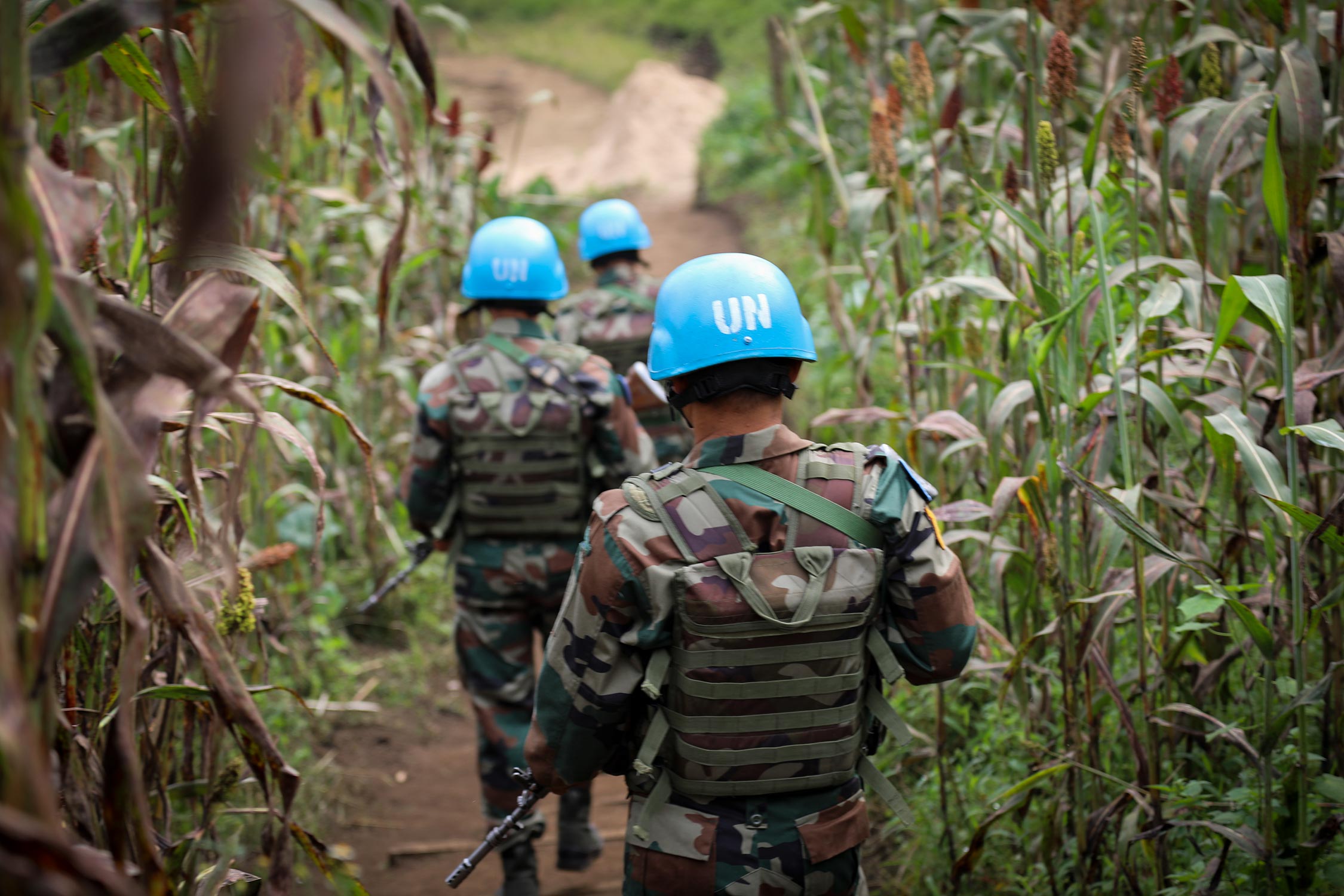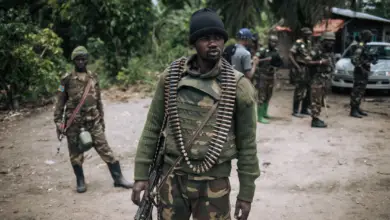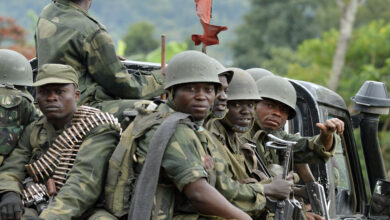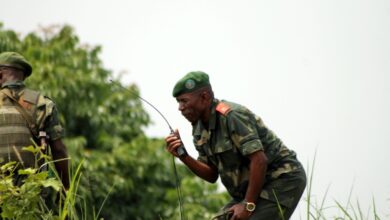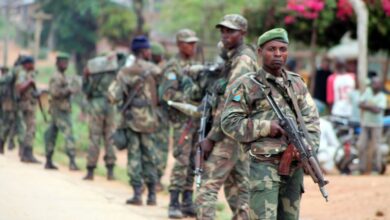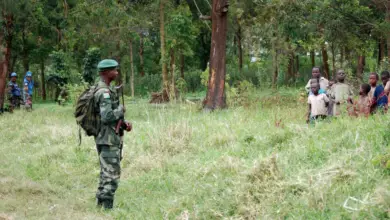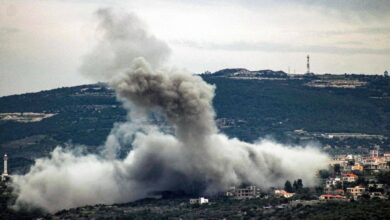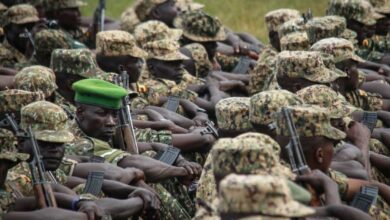Protestors stormed a United Nations peacekeepers’ camp near the eastern DR Congo town of Beni on Monday, November 25, angered by failures to curb a notorious armed group that killed eight civilians overnight, an AFP reporter said.
Demonstrators invaded one of two MONUSCO camps on the town’s outskirts despite gunshots fired by Congolese security forces seeking to disperse the crowd.
Dozens broke into the camp, which had apparently been evacuated, and set fire to a part of it, an AFP reporter saw.
They were among an angry crowd several hundred strong that had headed to the camps after setting fire to Beni town hall, partially damaging it.
The Allied Democratic Forces militia has plagued eastern Democratic Republic of Congo for decades, despite the presence of a large U.N. force and repeated declarations by the government to root it out.
Army spokesperson Colonel Mak Hazukai confirmed that the town had been attacked by armed men overnight, telling AFP that “the enemy entered the Boikene quarter and killed eight civilians.”
In the town center, two police officers were seen bleeding heavily from wounds after the morning protest, an AFP reporter saw.
Update November 25 At least four people were killed during the protests, the military said later on Monday.
“There were four deaths during the day,” military prosecutor Kumbu Ngoma told AFP. “Ten civilians were wounded and three Congolese military were also hurt.
MONUSCO said peacekeepers fired warning shots in the air, but none were aimed at the protesters. An AFP correspondent at the scene said Congolese army and police also fired shots.
The Congolese presidency announced the army and U.N. peacekeepers will launch “joint operations” to beef up security. The planned joint operations aim at “ensuring peace and security for the civilian population,” the presidency said after an emergency meeting with MONUSCO.
There were no details as to when the operations would begin.
MONUSCO issued its own statement, saying it would “strengthen cooperation with its partners and work closely with the authorities to jointly find solutions for the people of Beni.”
The Armed Forces of the Democratic Republic of Congo will also set up an “advance headquarters” in Beni, the presidency said.
North Kivu’s provincial security committee declared a curfew between 6 p.m. and 6 a.m. in the city of Beni and the towns of Mbau, Mavivi, Oicha, Kokola, Erigengeti and Mayimoya, stressing the need to restore public order and security, actualite.cd reported.
Nearly 70 civilians have been massacred in the Beni region since military action against the ADF began at the start of November.
Citing the U.N. Refugee Agency (UNHCR), the European Commission last week reported that at least 2,560 displaced people – 91% women and children – moved towards Beni, and people fleeing fighting and attacks are moving from Mbau and Oicha towards Beni.
A protester died in police firing on Saturday. Two police officers were killed the same day by angry demonstrators, the U.N.’s Radio Okapi said.
The protests have focused on a perceived lack of U.N. action against the rebels, but MONUSCO on Saturday said the Congolese army had launched the offensive unilaterally.
“MONUSCO cannot engage in operations in a war zone without being asked and without strict coordination with the national army,” it said, adding that uncoordinated action could lead to friendly fire incidents.
The ADF in DR Congo
Democratic Republic of Congo has been wracked by conflict near its eastern border, with many of the militias having evolved from the two Congo wars (1996-1997 and 1998-2003).
The Beni territory, in the North Kivu province which borders Uganda and Rwanda, has been particularly affected by militia violence.
Among the militias troubling the Kivu area are the Allied Democratic Forces, an Islamist-rooted armed group that has been linked to Islamic State Central Africa Province, and the Democratic Forces for the Liberation of Rwanda (FDLR).
Both groups have been blamed for a string of atrocities in eastern DRC, but they are also a source of political friction between the DRC and its neighbors because of their cross-border nature.
In April, ISIS formally recognized its Central Africa Province in Democratic Republic of Congo, when its centrally controlled media outlets began to attribute attacks to ISCAP, and during his first video appearance in five years, ISIS leader Abu Bakr al-Baghdadi was seen viewing a document entitled “Wilayat Central Africa.”
There was earlier evidence that ISIS had ties to the Allied Democratic Forces, a Ugandan-led but DR Congo-based militant group that mainly operates in the border area of North Kivu province, but it is unclear if the new ISIS affiliate is the ADF, a splinter group, or a different organization.
Formed in 1995, the ADF is thought to have killed hundreds of civilians and more than 20 U.N. peacekeepers, but although it is often blamed for killings, robberies and kidnappings, numerous armed groups operate in the region and it is often difficult to be certain who the true assailants are.
President Felix Tshisekedi ordered the operation in Kivu “to launch a final assault against all national and foreign armed groups with a view to restoring total peace in the Far North.”
DR Congo’s government has in the past accused neighboring governments of seeking to destabilize the country, while those accused have in turn said DRC is a haven for groups that oppose them.
With reporting from AFP

